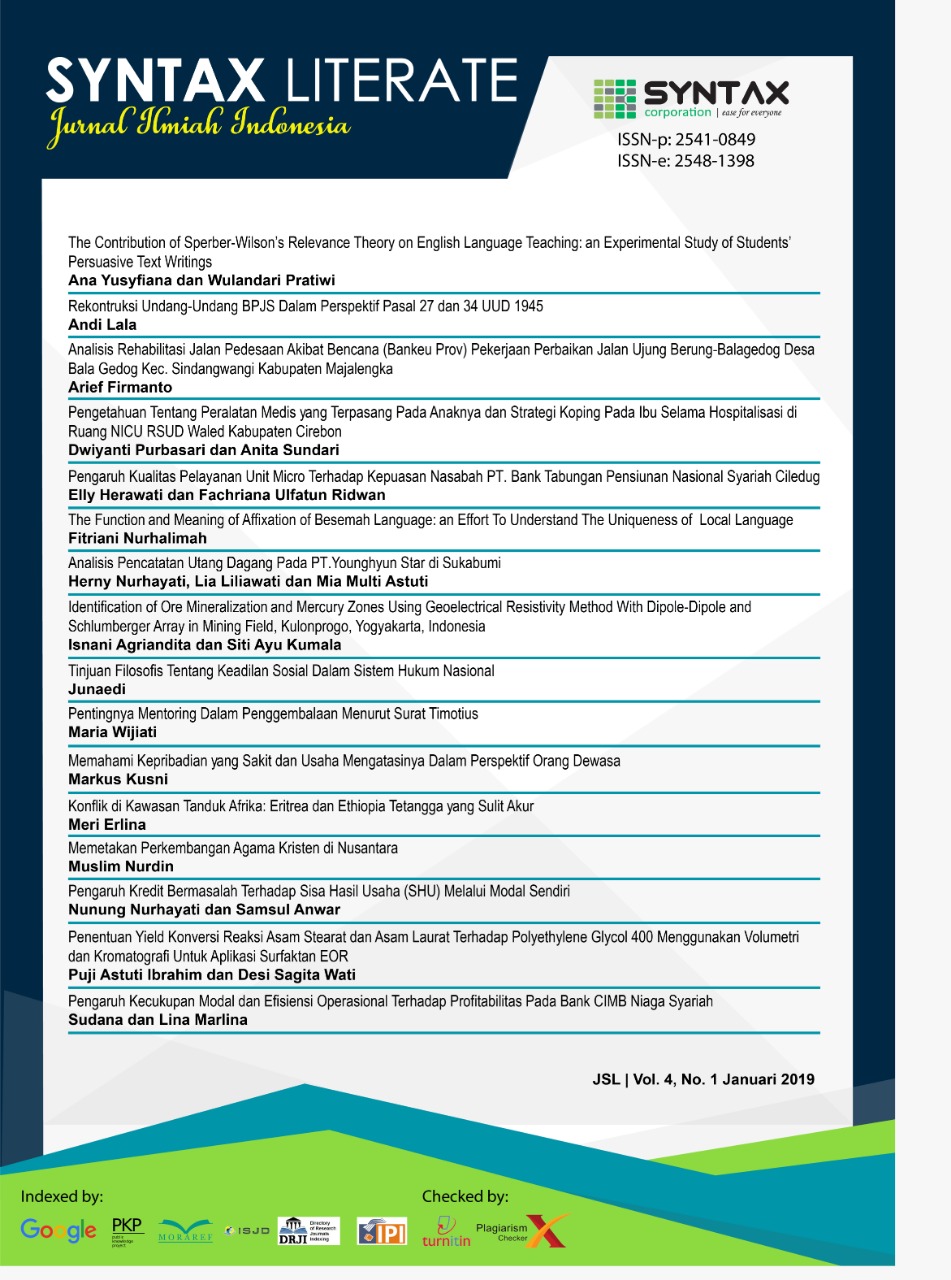THE FUNCTION AND MEANING OF AFFIXATION OF BESEMAH LANGUAGE: AN EFFORT TO UNDERSTAND THE UNIQUENESS OF LOCAL LANGUAGES
Abstract
This title of this research is The Function and Meaning of Affixation of Besemah
Language: An Effort to Understand the Uniqueness of Local Languages. The
research is aimed to describe the function and meaning of morpheme in Besemah
Language. The object of this research is the dictionary of Besemah Language by
Dr. Sutiono Mahdi, M.Hum. The method of this research is descriptive qualitative
method. The writer uses the theory of Mahdi (2012:93). The result of this research
shows that the function of morpheme mostly divided into two types. First is the
morpheme creating verb. They are prefix N-, prefix be-, prefix te-, prefix di-, suffix
–ku, suffix –i, suffix –lah, simulfix N-....-ka, simulfix di-......-i. Then the mopheme
creates noun. They are preffix pe-, se-, suffix –an, simulfix ke-.....-an and simulfix
pe-.......-an. Then the meaning of each morphemes are different. The morpheme
also has a various meaning mostly when its function creates verb, the meaning are
doing, having, using, producing, emphaizing, ordering to do, telling something
from the past, telling the event. Eventhough the affixes attached are similar, yet it
depends on the root attached. Meanwhile the morpheme which its function creates
noun, the meaning are person who likes, person who have characteristic, showing a
place, things or tools.
Keywords: Morpheme, affixes, preffix, suffix











